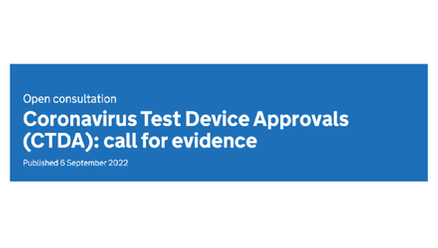COVID-19 testing guide for Omicron
I have tested positive for COVID-19, how do I know if I have the Omicron variant?
There are a range of tests to detect the SARS-CoV-2 virus and it is useful to understand what the results can and cannot tell you, especially in relation to the new Omicron variant.
Most people in the UK have been regularly testing themselves at home or at work with COVID-19 lateral flow devices (LFDs). These devices are set up to quickly detect the SARS-CoV-2 nucleocapsid (N) protein. Each new variant of SARS-CoV-2 has some mutations in the N gene sequence, but so far these changes do not seem to affect LFD results.
For all variants of the virus – including Omicron - LFDs have very good reliability, though they are lower in accuracy than PCR tests. This means that if you test positive on an LFD, you can assume you have COVID-19. If you test negative on an LFD, then it is still possible that have the infection, but if so at a low level and you can proceed with caution.
It is not possible to tell which variant you have if you test positive with an LFD.
When you have a sample taken for PCR, it is sent to either a hospital microbiology or virology department or a pillar 2 testing laboratory. These laboratories all use kits produced by a range of different commercial companies to process results – each kit following slightly different PCR methods.
Figure 1: PCR primer tagging with Omicron variant of COVID-19, displaying S gene target failure (‘SGTF’)
All PCR kits use primers, which are molecular tags that attach to two or three places on the SARS-CoV-2 genome sequence. Most kits target somewhere in the Open Reading Frame (ORF), which is a section at one end of the genome.
PCR kits that tag the genetic code in three places – the ORF, S and N regions – are used regularly in UK laboratories. Changes in Omicron’s Spike protein mean that certain primers cannot find the place they are designed to “tag” or attach to in the genetic sequence. This is because these sections of genetic code are no longer in the Omicron variant, which may lead to a strange PCR result.
A PCR test might show a reaction for the ORF and N tags, but not the S tag. This is called ‘target failure’ for the S gene or sometimes ‘S gene deletion’. Biomedical scientists and their laboratory assistants who work in healthcare testing noticed this for the Alpha variant of SARS-CoV-2 at the end of 2020.
In mid to late November 2021, S gene target failure (‘SGTF’) was noticed in more samples than expected. Further investigation showed that many of these tests with S gene target failure had actually picked up the Omicron variant.
To absolutely confirm a positive case of the Omicron variant, the sample must still be analysed in detail in a specialised sequencing laboratory.
As Omicron becomes the main version of the SARS-CoV-2 virus in circulation, scientists are considering using results with S gene target failure as ‘probable Omicron’. This method offers a useful way to estimate how rapidly and widely this new variant is spreading over the next few months.
Useful reference :
- UKHSA 8th December 2021 : Omicron VOC-21NOV-01 (B.1.1.529) update on cases, S gene target failure and risk assessment





